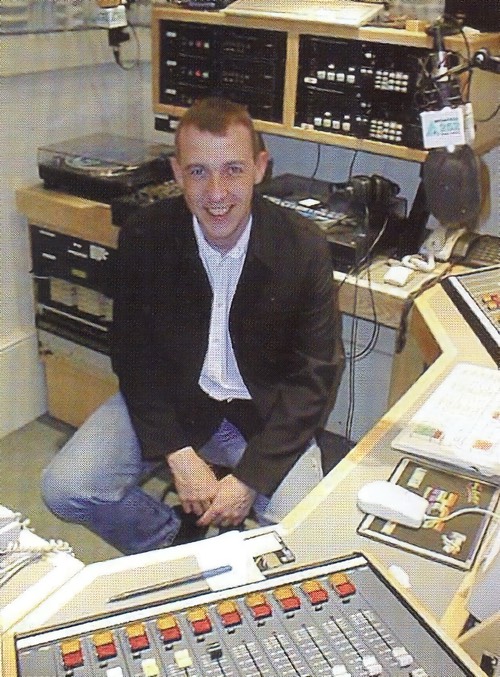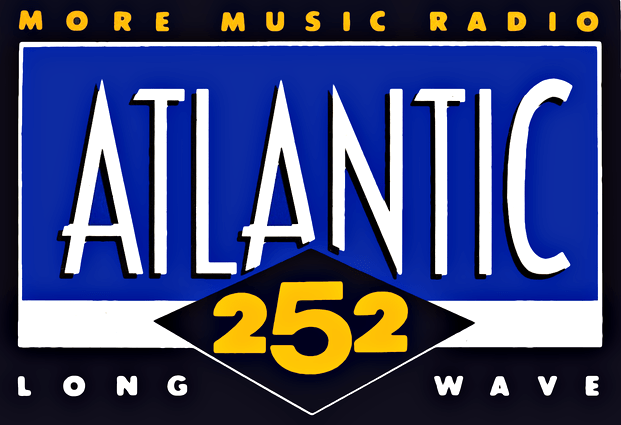X-Trax Article with David Dunne
This article originally appeared in the radio industry “X-Trax” Magazine and gives an insight into the evolution the station had to go through in the late 90s.
AIR DATE: 1 September 1989
TSA: 31,506,000 15+’s
BROADCAST AREA: UK and Ireland apart from the North of Scotland, and the South East of England.
REACH: 7%
When Atlantic 252 launched in 1989 they were the antithesis of the British radio industry. Where ILR had lively chat interspersed with the DJ’s favourite tracks, Atlantic brought tightly-formatted, high impact hits.
David Dunne was in Ireland at the time, and remembers his surprise. “It sounded like radio from outer space, because it was completely alien to what was going on at the time.” The station was markedly different from its rivals for one simple reason - it had to be.
To persuade someone to re-tune to your new FM station, they have to break the habit of a lifetime and touch the tuning dial. To get them to re-tune to your new long-wave station you have to go even further, and get them to change frequencies all together.
THE PROBLEM
The fresh approach caught on with listeners, as David explains: “Atlantic started to do really well, and by the mid nineties it was doing phenomenally well. As a result the format started to be assimilated.” By the late nineties the format was becoming a victim of its own success, and rather than listening to long-wave, listeners found they could get a similar approach on their local FM station.
In February 1998, Atlantic realised that to keep their market share something had to change, and they commissioned a study into the station. “They looked at what 17-24 year olds were really in to, what their trends were in radio listening - what they liked and what they didn’t. They asked Atlantic’s listeners what they liked about the station, and they asked non-listeners what they thought Atlantic was all about. It was quite damning in terms of what it said about us and fairly damning in terms of radio.”

David Dunne, pictured in the London studio of Atlantic 252
THE REPORT
The report revealed that Atlantic’s audience was made up of the old and the young, with little in the middle, and it triggered a fundamental re-evaluation of the station. They realised that to get an audience on long-wave they had to fill a niche that wasn’t catered for, and to get a large enough audience, it had to be a sizeable niche. The choice was either to turn into a 55 plus station or change the format to appeal to an audience that was missing from their listenership spectrum, and one that felt they weren’t currently catered for by the radio industry - 17-24 year olds into non-mainstream music.
One advantage of the niche was its size, “Clubbing is a mainstream youth occupation. Ibiza sees nearly a million 17-24s every year, whereas fewer than 400,000 people go to all the festivals in the UK.” David feels that he shares this niche solely with BBC Radio 1. Atlantic, however, offers an added vital attraction - its location. Although BBC Radio 1 serves the whole country there are some references to their London base they can’t help but make. This was picked up by the report: “What came across was that outside of London people were getting excessively pissed off that Radio 1, no matter how it tried to portray itself otherwise, was very London-centric.” Atlantic, on the other hand, are based in Ireland, and exclude the South East from their TSA. “We can say ‘alright we’re not local to you, but we don’t care about London.’” David admits, “It’s something we’re playing on quite shamelessly” in their ‘London Doesn’t Get It campaign.
THE SOLUTION
This re-positioning was fairly radical, as they moved from a tight format to what David calls ‘anti-format’. However, the team at Atlantic started with small changes. Initially they brought David in to do a dance show: “They’d never had a dance show on the station before. They’d missed ten years of the biggest youth culture rebellion since the 50’s.”
Once the show was successfully established, David was appointed as programme director. The station’s head of music, Sarah Henderson, took the music re-positioning in her stride: “Sarah’s a guitar girl at heart, so I expected to be pointing out big dance tunes to her. I stopped after the first week, because she can see what the big hits are going to be weeks in advance. She will also go up-front with stuff, so listeners don’t have to wait to hear a new record.”
The playlist features six to eight adds a week to keep the music fresh, and they’ve sharpened up their music policy. David is keen for the station to lose its reputation for “having eight bog-standard mainstream hits which it played all the time”, and so is promoting his changes with the tagline, ‘real music, real radio’.
The other side of ‘real radio’ is the presenters. David has revamped the schedule, but kept on the vast majority of his presenters. He has, however, added new shows and brought in Mark Brow for breakfast. He wants to focus on the personalities of his presenters, but his definition of ‘personality’ is clear.
His presenters are around the age group of the target audience, so he wants them to communicate about “the music and their thoughts and experiences that are relevant to their age group.” This communication is guided, to ensure coherence with the station image. They must avoid cliche, inanity and waffle, and the links must remain tight. Yet the guidelines aren’t designed to stifle the presenters. “If they want to do something spontaneous then it’s better to try it and maybe not succeed, than not try it and be dull.”
The initial schedule changes were made in November, with a second wave in June. Among the most striking additions to the line-up was Howard Marks, “He came in and guested on breakfast and liked it so much he said he’d like to be involved. It fits our slightly left-of-centre viewpoint.” David is also particularly proud of two new worldwide dance brands who have joined the station, Universe/Tribal Gathering, and Trade: “I’m really chuffed we’ve got them because they knocked back Kiss, Galaxy, and Radio 1 to come to us.”
THE RESPONSE
This second wave, however, should be the last major changes this year. Atlantic 252 are keen to bed down their schedule, so listeners and advertisers have a chance to get used to it. While the early response from listeners has been good, advertisers have been slower to take to the changes. “They are used to a certain image of Atlantic, but the response has been positive rather than negative.”
Although advertisers may be a little wary, the new niche means the station reaches fashion-conscious consumers, who are particularly attractive to other companies. Clients who have taken advantage of this range from Channel 5 to Sara Lee, and from the Ministry of Sound to Wimpy.
THE FUTURE
The revamp of Atlantic 252 has brought a new era to the station, and David is confident it will be a successful one. “We’ve got a really good team and we sound fresh. If we were on FM we would have trashed the opposition.” However, even on long-wave, Atlantic is making inroads into their chosen niche, attracting a 12% reach of 15-24 year olds in the TSA. Somehow David has achieved the impossible. His listeners have moved beyond the on-off button on their radio, and figured out how to change the frequency band too.
